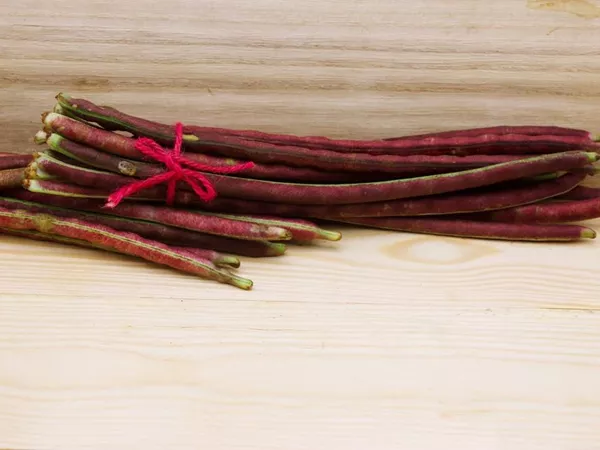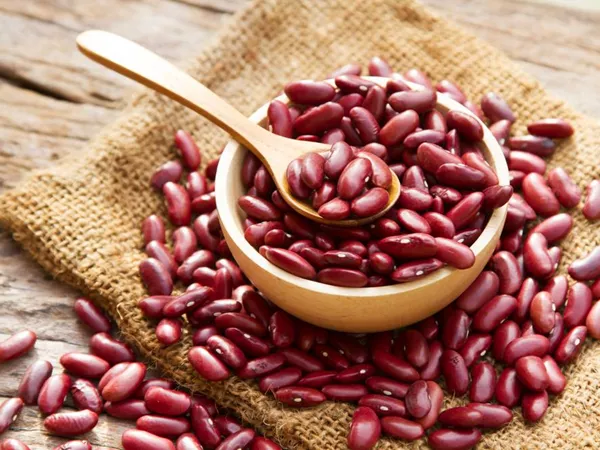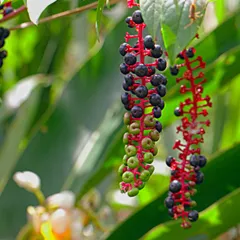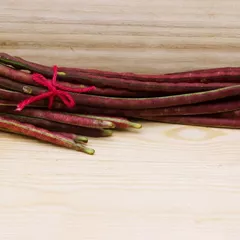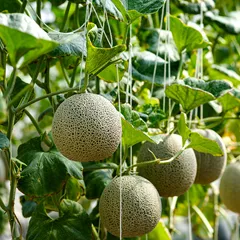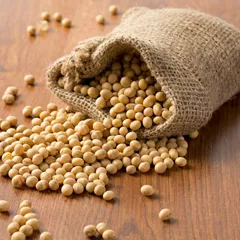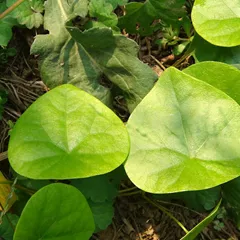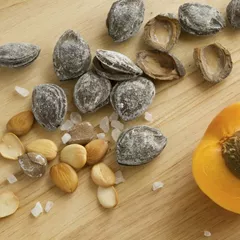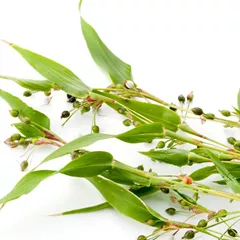Chi Xiao Dou
Chi Xiao Dou
English: Adzuki beans
Chinese: 赤小豆
Parts used: Dried ripe fruits
TCM category: Herbs that drain Dampness
TCM nature: Neutral
Organ affinity: Heart Small intestine
Scientific name: Vigna angularis
Other names: Red mung bean, Red bean, Azuki bean or Aduki bean
Use of Chi Xiao Dou (adzuki beans) in TCM
Please note that you should never self-prescribe TCM ingredients. A TCM ingredient is almost never eaten on its own but as part of a formula containing several ingredients that act together. Please consult a professional TCM practitioner, they will be best able to guide you.
Preparation: Harvest the whole plants when the fruits are ripe. Dry under the sun and take the fruits. Remove impurities and dry again under the sun.
Dosage: 9-30 grams
Main actions according to TCM*: Expels dampness by facilitating urination. Activates Blood circulation and detoxifies. Reduces swelling and expels pus.
Primary conditions or symptoms for which Chi Xiao Dou may be prescribed by TCM doctors*: Edema Jaundice Carbuncles
Contraindications*: Not suitable for patients with Yin Deficiency.
Common TCM formulas in which Chi Xiao Dou is used*
Shu Zao Yin Zi
Source date: 1253 AD
Number of ingredients: 11 herbs
Formula key actions: Purges and drives out Water. Clears Wind. Releases from the Exterior .
Conditions targeted*: Nephritis with EdemaIncreased intracranial pressure and others
Chi Xiao Dou is a deputy ingredient in Shu Zao Yin Zi. This means it helps the king ingredient(s) treat the main pattern or it serves to treat a coexisting pattern.
In Shu Zao Yin Zi, Chi Xiao Dou is a diuretic herb that is specific for pathogens that have acquired form such as visible Edema instead of mere Dampness.
It builds up the Spleen along with Red poria. This prevents damage normal Qi of body and supports the Qi dynamic.
In combination with the key and deputy herbs, it guide out water from the Interior through the bowels.
Gua Di San
Source date: 220 AD
Number of ingredients: 3 herbs
Formula key actions: Discharges Phlegm or food stagnation through vomiting .
Conditions targeted*: Oral ingestion of poisonsAcute gastritis and others
Chi Xiao Dou is a deputy ingredient in Gua Di San. This means it helps the king ingredient(s) treat the main pattern or it serves to treat a coexisting pattern.
In Gua Di San, Chi Xiao Dou expels Dampness and eliminates the irritability and fullness.
Xuan Bi Tang
Source date: 1798 AD
Number of ingredients: 9 herbs
Formula key actions: Clears and resolves Damp-Heat. Unblocks the meridians. Disbands painful obstruction.
Conditions targeted*: Rheumatic feverRheumatoid arthritis and others
Chi Xiao Dou is an assistant ingredient in Xuan Bi Tang. This means that it either serves to reinforces the effect of other ingredients or it moderates their toxicity.
Key TCM concepts behind Chi Xiao Dou's properties
In Traditional Chinese Medicine (TCM), Chi Xiao Dou belongs to the 'Herbs that drain Dampness' category. These herbs are typically diuretics, meaning that they promotes the increased production of urine in order to remove Dampness that has accumulated in the body. According to TCM Dampness accumulates first in the lower limbs, causing edema and impaired movement. From there, if unchecked, it can move upward and impair digestion and eventually the respiratory system.
Furthermore Chi Xiao Dou is Neutral in nature. This means that Chi Xiao Dou typically doesn't affect the balance in your body. Balance between Yin and Yang is a key health concept in TCM. Eating too many "Hot" (Yang) ingredients can lead to an imbalance whereby one has a Yang Excess. The inverse is true as well: too many "Cold" (Yin) ingredients can lead to a Yin Excess. The Neutral nature of Chi Xiao Dou means that you don't have to worry about that!
Chi Xiao Dou also tastes Sour and Sweet. The so-called 'Five Phases' theory in Chinese Medicine states that the taste of TCM ingredients is a key determinant of their action in the body. Sour ingredients like Chi Xiao Dou helps with digestion and restrain abnormal discharges of Fluids from the body, such as diarrhea or heavy sweating. On the other hand Sweet ingredients tend to slow down acute reactions and detoxify the body. They also have a tonic effect because they replenish Qi and Blood.
The tastes of ingredients in TCM also determine what Organs and Meridians they target. As such Chi Xiao Dou is thought to target the Heart and the Small intestine. In addition to regulating Blood flow, in TCM the Heart is believed to be the store of the 'Mind' which basically refers to someone's vitality. Like the Stomach, the Small Intestine has a digestive role, extracting the "pure" part of what we injest to the Spleen and the "impure" down to the Large Intestine.
Use of Chi Xiao Dou as food
Chi Xiao Dou is also eaten as food. It is used as an ingredient in dishes such as Spiced & seasoned adzuki beans or Pumpkin and Adzuki Bean Dip.

